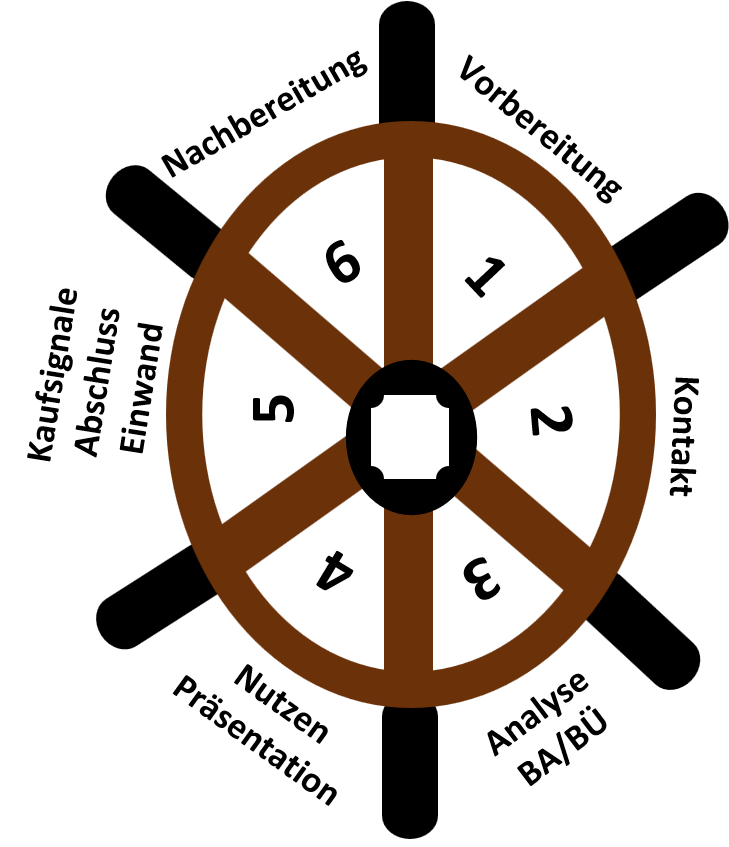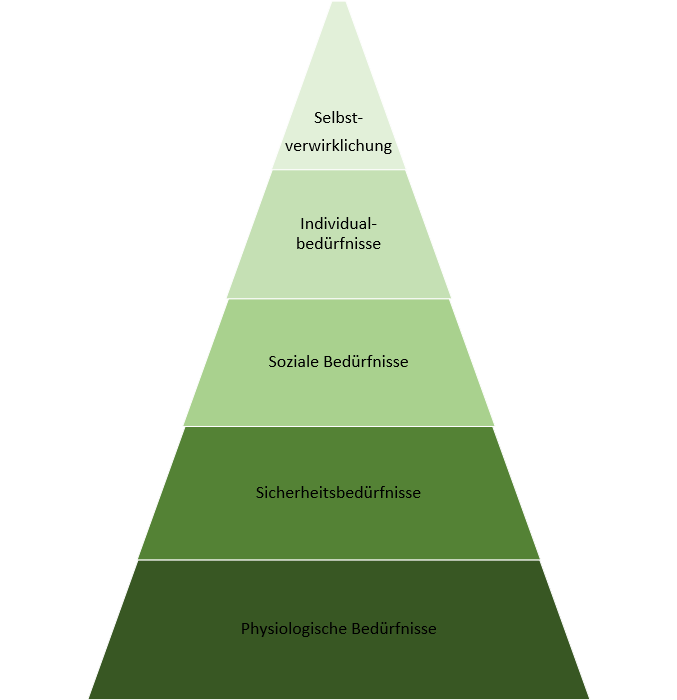Steering Wheel Of Selling
What is the sales wheel and how can it support me throughout the sales process?

The steering wheel of selling is divided into six phases and is "movable", i. e. the order of the phases depends on the situation. The phases only apply as a basic structure.

Preparation
The preparation phase is often forgotten. However, it is the basis of the sales pitch. In the preparatory phase, the seller familiarizes himself with the potential buyer, researches the company if necessary, gains knowledge of the industry and – if possible – finds out something about the person he is talking to.
Contact Phase
The contact phase serves to get to know and assess each other. The conversation partners greet each other, get to know each other, engage in small talk. Topics that have already been researched can be discussed here and interest in the other person can be shown.
Requirement/Needs analysis
In this phase, specific questions are used to determine what is important to the customer and what the customer really cares about . The focus is specifically directed to product properties and application context. (Duplicate) leading question: “What is important to you [in relation to]? What is it about you?”.
It is important to distinguish between the two terms as follows:
- requirement : Product features (What can it do?)
- need: motives, motivations (emotional)
Core Business Needs
The core needs in business are:
- Profit/Saving
- Safety / Pain Avoidance
- Watch
- Comfort
- joy/fun
Needs Pyramid
The needs pyramid maps all human needs.

Physiological Needs
- basic human demands – food, sleep, sex
Security Needs
- regular income
- housing
Social Needs
- family
- circle of friends
- (club) membership
Individual Needs
- recognition
- status symbol
Self-Realization
- meaning of life
Presentation
In this phase, a product is presented to the customer and advantages and benefits (as counterparts to needs and wants) are highlighted. It is important to explicitly establish a link to the points determined in the requirement/needs analysis. A useful structure for the product presentation is the advantage-benefit argument.
Buy Signals / Closing / Objection Handling
As soon as the customer sends purchase signals (nods, questions about the application, ...), the seller's task is to ask the final question. It's not about whether the customer buys, but about details about the delivery, for example.
If the buyer still has concerns, open-ended questions must be asked to find out whether it is an objection or an excuse.
An objection is a “real,” serious concern. A pretense is a premeditated reason that is not decisive in reality. The customer does not want to reveal the real reason (immediately).
To find out if this is an objection or an excuse, the seller can ask the following question: " Is there anything else stopping you from doing business with me?" “. If the customer then gives a second reason, the first statement tends to be an excuse. In this case, the last statement is usually what the customer really cares about (objection). If the customer does not give any other reason, the first statement was already the objection.
postprocessing
This phase is about reflecting on the conversation, possibly preparing a follow-up appointment, noting down information about the customer / maintaining it in CRM (customer relationship management ) and the like.